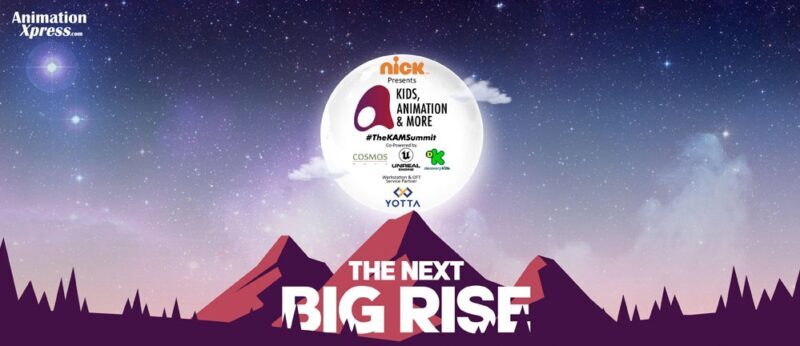
KAM summit gave a platform to an array of panel discussions and all through out the sessions, there was one common theme that highlighted the shortcoming of writing talent in the country. To address this gap, KAM summit ’21 saw a definitive discussion by industry experts on the “Craft of Writing” panel witnessed informative and creative aspects of becoming an animation writer. The panel included great writers from the industry like Salt Content CEO Angela Salt, Nucleus Media Rights vice president creative and development Sonam Shekhawat and independent writer/producer Atul Rao. The session was moderated by Discovery Kids India co-founder and Indusverse CCO Alok Sharma.
The session began with each panelist advancing their viewpoints about writing shows for varied audiences especially ids and how can the skill be developed.
Speaking about the creativity that results from boredom, Rao shares, “I am bored all the time and I find my entry point in everything. Once I’m in the script I’m into it. As a writer, I am always there to help the craft by structuring the story and how to make feel the emotionality in the story.”

Writing can be a laborious task that one may want find reasons to procrastinate before getting to the desk. Keeping these tendencies in mind, some believe that a regimen and discipline are crucial if one wants to pursue the profession of writing.
Salt shares, “I never ever get bored with writing, I am very much devoted and disciplined when it comes to writing. I am very much organized and disciplined with my time, I set boundaries and maintain life balance and sometime I will work for 16 long hours to complete my writing works.”
According to Shekhawat, the basic rule of storytelling is to think about the protagonist , what is he doing, his aim and the obstacles he overcomes to reach his aim. Breaking down the rule further, Shekhawat explains, “The most important thing to consider while writing for children stories are that all the solutions and resolutions should be driven by creativity not by logics. More creativity is required for kids content.”
Kids’ shows have a range of formats and the stories of each show has its own place and theme which writers need to abide by if they want to expand its universe. Rao shared, “Every show and franchise has its own flavour, logic and its own audience. As a writer you have to know all the characters and all the primaries to make your story work. Writing is a creativity and analysis coming together.”
Writing for animation has its unique set of requisites which writers must be mindful of. There are some common mistakes that writers need to steer clear of if they aim to advance their craft.
Speaking about the oft-repeated error that one can avert, Salt share, “Common mistake to be avoided while writing for animation is to avoid lot of detailing and adding up of many assets that are props, additional characters, backgrounds. You have to write very imaginative and creative and crisp scripts.”
Adding to the list of mistakes one should avoid, Alok Sharma highlighted, “While writing for animation, we should avoid docking heads, adding random characters and props because everything costs and it is a time-consuming process. Don’t change occasions unless it is important and keep the script very crisp and dialogues very less.”
Apart from brevity and crispness, it is also important give elaborate descriptions of the scenes to make it easier for the animation team. Shekhawat points, “Biggest mistake the most writers do is not they don’t include all the details, because when you are writing animation you don’t have actors or locations that already exists.So you have to give a detail note of every key element in your script.”
As a rapidly evolving medium, there is a need to adapt to the times we live in and understand that inclusivity and diversity are the cherished values that must reflect in shows. Sharma explains, “Animation medium is evolving in every six months, we need to be more inclusive while writing. We are very glad that in India we have many female writers than male writers.”
It is a myth that writers need to be well-versed with the english language if they want to pursue this profession. Busting this misnomer, Sharma shares, “In India my animator , writers speak in vernacular languages almost everyone speak Hindi and other languages. Sometimes we force the writers to write in English. I feel that it is a high time to say that English is just a language you can write final draft in six to seven languages. So this may make life easier for the writers as well as for artists.”
What is paramount for writer, according to Sharma is that an animation director or a writer must think visually and write visuals as clearly as possible so that one who is reading your script can visualise exactly what one has written and what one had in mind.

